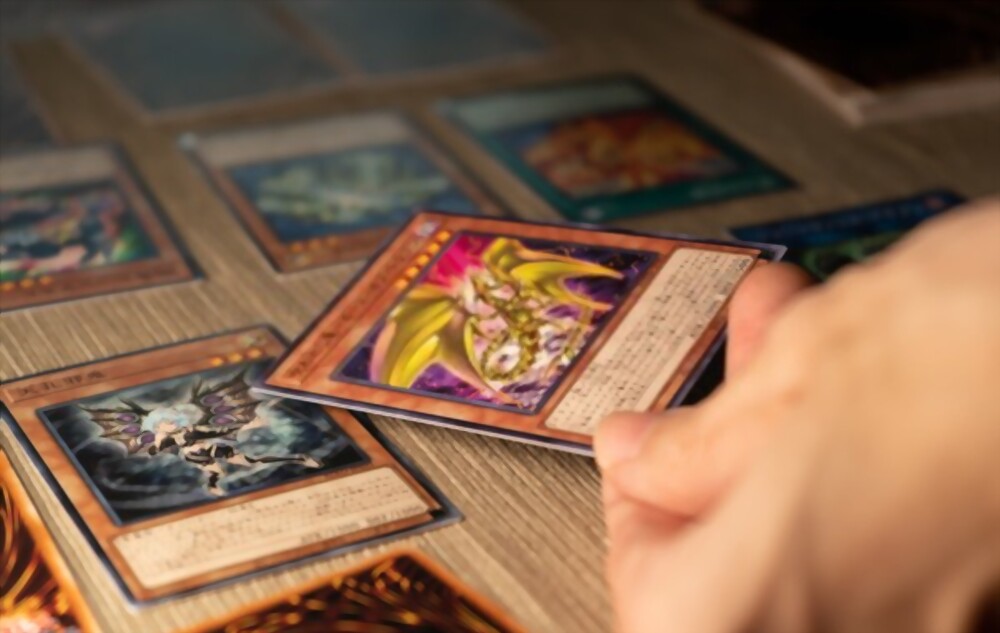The collectible trading card industry has indeed been blowing up recently, with Rare Yu-Gi-Oh Cards garnering a lot of popularity. Collectors and investors see their collections of these cards gain traction, with valuations reaching new highs as the game’s popularity grows.
Hundreds of thousands of cards have been created for the Yu-Gi-Oh trading card game. If you still have some of those old cards from when you were a kid, it’s worth checking through them to see if any of them are worth anything.
How The Rarity System Works
Greater rarity cards are often sought after in competitive card games like Yu-Gi-Oh! since Konami publishes the better cards in higher rarities. This isn’t always the case, but the higher the rarity, the more difficult it is to open sealed merchandise and get a card.
When purchasing or selling cards, keep two things in mind: you’ll need to know how rarities are dispersed in a set, and you’ll need to be able to recognize each rarity visually. The first step is simple: look for a card’s set identification. The letters and numbers underneath the numerals on the right side of the card indicate which rarities are included in each release and how many are given in each pack.
Core Set Booster Rarities
Each year, Yu-Gi-Oh publishes four core booster packs, all of which have the identical rarity distribution. The rarities in each booster have changed, and we’ll go over those adjustments in the next section.
Common
Commons can be thought of as the ‘basic’ Yu-Gi-Oh card. They don’t have the ornate lettering or foil that higher rarities have. Commons make up half of the cards in a modern core booster, while some are more difficult to find than others. Those are ‘Short Print’ Commons, and Konami’s official card database doesn’t show them. Short Prints aren’t included in every collection.
Super Rare
In addition to eight Commons, every core booster pack is guaranteed to include at least one Super Rare. Holofoil artwork, Level, and Attribute icons can all be found on modern Super Rares. Only holofoil artwork will be found on older Super Rares.
Ultra Rare
Ultra Rares are identical to Super Rares in a Rare Yu-Gi-Oh Card set, but the card name has gold foil lettering.
Secret Rare
The artwork, card name, Attribute, and Level of a Secret Rare are all covered in rainbow-colored foil.
Starlight Rare
A horizontal, lattice or grid-like holographic design covers most of the card face, including the card border, on each Starlight Rare. Starlight Rares are highly sought-after chase cards that sell for a lot of money on the secondary market because they only come in one in every case.
Set-Specific Rarities
There are numerous rarities outside the basic boosters, some of which are exclusive to a certain product or series of releases.
Gold Rare
Gold Rare comes in several different varieties, including Gold Secret Rare, Gold Ghost Rare, and Premium Gold Rare. These collectibles are only available in the Gold Series product range and are distinguished by their gold-colored borders.
Colorful Ultra Rares and Colorful Rares
A foil name stamp in color other than silver can be found on some Rares. These cards were designed for the Duelist League, a local organized play programme no longer in operation. From sets like Legendary Duelists: Season 2, you’ll also get Ultra Rares with name stamps in colors other than gold.
Collector’s Rare
The pursuit premium Collector’s Rare rarity first appeared in Toon Chaos in 2020, and it appears like a more muted version of a Platinum Secret Rare. These cards have a rainbow-colored design on the border, image, Level/Rank, and Attribute, as well as a Secret Rare-style name.
Like an Ultimate Rare, Collector’s Rare cards feature a slightly raised texture with an engraved appearance. The foil texture on these cards isn’t always oriented in the same direction, giving the Collector’s Rare pattern a distinct appearance that many people relate to fingerprints.
Rare Prismatic Secret
The Prismatic Secret Rare’s Secret-rare style has a lattice or grid-like arrangement similar to Starlight Rares. However, the effect is solely applied to the artwork.
Conclusion
It is heartening to know that there are still a lot of serious Rare Yu-Gi-Oh Card enthusiasts out there crafting the perfect decks or collecting the highly rare and expensive cards. Yu-Gi-Oh has modified its core set rarity scheme in the past and is likely to do so again, so regularly checking the official Konami card database or Troll and Toad’s catalogue is a wonderful method to stay up to date!


